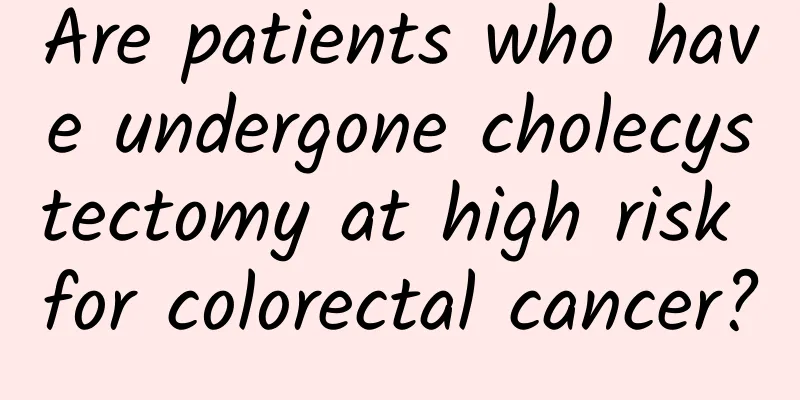How to identify stroke early? Remember the motto "BE FAST"

|
What is a stroke? Cerebral apoplexy, commonly known as stroke, is a common cerebrovascular disease in people's daily lives. It is also the "number one health killer" currently ranked first in the cause of death among Chinese residents. The "number one killer" of human health! ! It is a group of diseases that cause brain tissue damage due to sudden rupture or infarction of cerebral blood vessels. It has the characteristics of "four highs" of high incidence, high disability rate, high mortality rate and high recurrence rate. It is acute, progresses rapidly and has serious consequences. One in every four people in the world will have a stroke, and one person dies from a stroke every six seconds. In my country, there is a new stroke patient every 12 seconds and one person dies from a stroke every 21 seconds. The incidence rate is very high in our province, with about 300,000 new stroke patients each year and 1.5 million existing patients. The families of patients will suffer huge economic losses and physical and mental pain as a result. Stroke is generally divided into two categories: hemorrhagic stroke and ischemic stroke. Hemorrhagic stroke is also called intracranial hemorrhage, which is commonly known as cerebral hemorrhage or cerebral hemorrhage. Subarachnoid hemorrhage also belongs to this category. Ischemic stroke is a general term for brain tissue necrosis caused by stenosis or occlusion of the cerebral blood supply artery and insufficient cerebral blood supply, also known as cerebral infarction. At present, acute ischemic stroke accounts for about 70% of stroke. The most effective treatment measures are intravenous thrombolytic therapy and intravascular therapy (thrombectomy) within the time window. The best time for thrombolytic therapy is within 4.5 hours after onset. After that, the cells in the ischemic area will gradually necrotize; the best time for thrombectomy is within 6 hours after onset. The treatment time window is narrow, and the earlier the treatment, the better the effect. This is like a lack of water in a crop field. If the lack of water lasts for a long time, the seedlings will dry up. It is crucial to open the canal for irrigation as soon as possible. Therefore, once a stroke occurs, it is necessary to go to the nearest stroke center and stroke screening and prevention base hospital and other medical institutions with stroke treatment capabilities as soon as possible to receive standardized treatment. Time is life. Less delay means more recovery! Please send the patient to a hospital with experience in thrombolytic therapy and the conditions and ability to diagnose and treat the patient immediately. Don't miss the best time! How does stroke occur? / What kind of people are prone to these diseases? If we put aside the immutable factors (age, genetics, gender, etc.), there are seven variable factors that can lead to stroke: high blood pressure, high blood lipids, diabetes, coronary heart disease, smoking, alcoholism, obesity, etc. The risk of stroke will be significantly increased for people of advanced age, those with a history of stroke or a family history of stroke. Poor diet, smoking and alcoholism are very harmful to the human body. These bad habits will increase blood pressure and accelerate arteriosclerosis. How to identify stroke early? What is the "BEFAST" formula? Stroke can cause hemiplegia, speech disorders, dysphagia, cognitive impairment, depression and other symptoms. To quickly identify a stroke, you must remember the "BE FAST" mantra. Once an abnormality is found, you should immediately call "120" and be sent to a medical institution with a stroke center for emergency treatment. Specifically, "B" refers to balance, loss of balance or coordination, sudden difficulty walking; "E" refers to eyes, sudden changes in vision, difficulty seeing, or transient blackouts; "F" refers to face, facial asymmetry, crooked mouth; "A" refers to arms, sudden weakness or numbness in the arms, usually on one side of the body; "S" refers to speech, slurred speech, inability to understand other people's language; "T" refers to time. Simply put, if people experience the above symptoms in life, they may have a stroke. While waiting for the ambulance to arrive, What should we do? What should be done? What should not be done? First aid on the spot is very important. Correct and timely rescue is the key to reducing the death and disability rate. 1) Keep calm and immediately lay the patient flat, with the head high and the feet low, to reduce head pressure. Do not blindly use medication before a clear diagnosis is made. 2) If the patient is conscious, try to comfort him/her and keep him/her calm. Do not be too nervous or excited. Do not cry or call the patient loudly to avoid increasing his/her psychological pressure. 3) Quickly loosen the patient's collar and belt, maintain indoor air circulation, keep warm when it is cold, and cool down when it is hot. 4) If the patient is unconscious, do not shout or shake the patient. Lay the patient flat with the head turned to one side to prevent aspiration of vomitus and suffocation, and keep the airway open. 5) If the patient is unconscious and snoring loudly, it means that the tongue has fallen back and the patient can lie on his side. If necessary, wrap the patient's tongue with a handkerchief or gauze and gently pull it outward. 6) Do not press the Ren Zhong point, as this may block the patient's airway and cause suffocation. 7) If the patient has convulsions, you can wrap a bamboo chopstick with soft cloth and insert it between the upper and lower teeth to prevent tongue bite. 8) Correct transportation: 2-3 people should work together, one person should support the head and back, one person should support the waist and buttocks, and one person should support the waist and legs. All three people should work together to move the person horizontally to a flatbed or hard bed. Avoid helping the person sit up, pick him up, or carry him on the back. 9) Oxygen inhalation is possible. 10) Pay attention to safety during transportation. How to prevent it early Stroke is a catastrophic disease that is preventable and treatable. The first World Stroke Day was declared on October 29, 2006. Since then, there have been activities on October 29 every year, each time with a different theme. Primary prevention: Actively intervene in high-risk pathogenic factors of healthy people to reduce the incidence of stroke Secondary prevention: For patients who have had one or more strokes, the whole process of preventing stroke recurrence is achieved by finding the cause of the stroke, treating the reversible cause, and correcting all interventional risk factors. Control blood pressure, adjust blood lipids, control blood sugar, quit smoking, limit alcohol, control weight, exercise appropriately, and improve snoring (sleep apnea syndrome). Conclusion Early detection and early treatment of stroke are crucial. For stroke patients, time is life. Once a stroke occurs, timely rescue is a race against time. If thrombolytic therapy can be performed within 4.5 hours of symptom onset, blood vessels can be reopened and blood flow can be restored. The earlier the time, the better the effect. Most patients with timely treatment can return to their families and society. For the health of our families, let us take action immediately, intervene early, obtain the greatest benefits with the least investment, and escort "Healthy China"! B: Balance, loss of balance or coordination, sudden difficulty walking; E: Eyes: Sudden vision changes, difficulty seeing, or sudden blackouts; F: Face: Grin, pout, and stick out your tongue in front of a mirror. If your face is crooked, your mouth is tilted, and your tongue is tilted to one side, then it is abnormal. A: Arm: Stretch both arms horizontally, then close your eyes and count to twenty seconds, then open your eyes and look. If you find that one side is drooping, it may be weak. S:Speech:Whether the speech is unclear and the words are not clear enough. T: Time: Time is of the essence. If you experience any of the above symptoms, call 120 immediately to get the best treatment opportunity. If any of the above three items exists, please call the emergency number 120 immediately (accurately describe the address and approximate condition). (Li Shengyun, Wang Peisong, and Chen Menghuan from the Clinical Skills Training Center of the First Affiliated Hospital of Zhengzhou University) |
<<: Facebook’s Funding and Path to a $100 Billion Valuation – Infographic
>>: Emergency treatment for cardiac arrest - CPR
Recommend
What should women eat to treat their weak body?
There are many reasons why women are physically w...
Why is fried dough twist so high in calories? How to make fried dough twist at home
After deep frying, the calories of any food will ...
How to check for adnexitis?
Adnexitis is a relatively common inflammatory dis...
How many days after dydrogesterone do you get your period?
How many days after taking dydrogesterone will me...
Causes of eczema on female chin
For female friends, it is true that appearance is...
What is the cause of benign breast calcification?
The breast calcification foci that people often t...
How to clean inverted nipples? Cleaning of inverted nipples
Inverted nipples cannot be cleaned regularly and ...
Female urethral stinging pain
Female urethritis is a relatively common disease....
How to check if you suspect pregnancy
In modern society, perhaps because some of our th...
What happens if you have sex during your menstrual period? What happens if you have sex before your menstrual period ends?
The menstrual period is an important period for w...
Are raw eggs more nutritious? Can eggs be eaten if the yolk turns green when boiled? Rumors about eggs are cleared up!
gossip Eggs are the best choice for protein suppl...
What to do if the leucorrhea is yellow-green
In daily life, female friends are under great pre...
How did the name Chengdu come from? Topographical features of Chengdu
Chengdu, referred to as Rong, is the capital of S...









